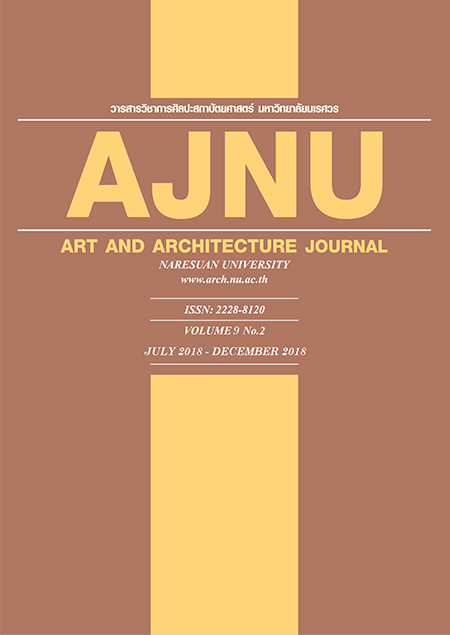The Development of a Bra for the Disabled.
Main Article Content
Abstract
This mixed-method research aimed to study the problems and requirements of the disabled in terms of bra to create guidelines for designing and developing a bra for the disabled, and studying the acceptance of the developed bras. The problems and requirements were collected through qualitative study of in-depth interviews, user research methods in product development, and the quantitative study through structured questionnaires from 20 purposely chosen disabled individuals. The collected data were analyzed by descriptive statistics and the Mann-Whitney U test was used to test product acceptance. The research study revealed that: 1) the problem of using a bra for the disabled is that putting on and removing the bra are very difficult, particularly the hook attachment, and the tiny shoulder strap which caused shoulder pain. 2) The desired disabled bra is a bra with easy removal attachment, a two-centimeter wide velvet bra strap, without mold and wire, and that is easy to adjust. 3) Overall product satisfaction was high, and the convenience of removal was highest. The product acceptance test results showed that the sample who accepted were satisfied with using the disabled’s bra in daily life more than the others.
Article Details
References
สำนักนโยบายและยุทธศาสตร์. (2555). คู่มือมาตรฐานกลางประเมินความสามารถตามความพิการ. กรุงเทพมหานคร: สำนักงานปลัดกระทรวงสาธารณสุข กระทรวงสาธารณสุข.
Au, K. (2011). Advances in knitting technology: Elsevier.
Brown, P. J. (2003). Consumer Choices Clothing ideas for people with special needs. Retrieved from http://counties.agrilife.org/rockwall/files/2011/09/clothingforspecialneeds_3.pdf
Clulow, E. E. (1974). Clothes for the handicapped. The Journal of the Royal College of General Practitioners, 24(142), 362.
Disabled Living Foundation. (2017). Choosing clothing and dressing equipment. Retrieved from http://www.dlf.org.uk/factsheets/clothing
Durá, J. V., Caprara, G., Ballarino, A., Cavallaro, M., Kaiser, C., & Stellmach, D. (2014). New technologies for the flexible and eco-efficient production of customized products for people with special necessities: Results of the FASHION-ABLE project. Paper presented at the Engineering, Technology and Innovation (ICE), 2014 International ICE Conference on.
Miyake, M., Manabe, Y., Uranishi, Y., Imura, M., & Oshiro, O. (2013). Voice response system of color and pattern on clothes for visually handicapped person. Paper presented at the Engineering in Medicine and Biology Society (EMBC), 2013 35th Annual International Conference of the IEEE.
Pattanavichai, S., & Pattamavorakun, S. (2015). Creating detectors clothes' colors and presentations for the visually impaired. Paper presented at the Science and Technology (TICST), 2015 International Conference on.
Thilagavathi, B. (2015). Recognizing clothes patterns and colours for blind people using neural network. Paper presented at the Innovations in Information, Embedded and Communication Systems (ICIIECS), 2015 International Conference on.
Thoren, M. (1996). Systems approach to clothing for disabled users. Why is it difficult for disabled users to find suitable clothing. Applied ergonomics, 27(6), 389-396.
Yu, W., Fan, J., Ng, S., & Harlock, S. (2014). Innovation and technology of women's intimate apparel: Woodhead Publishing.
กระทรวงการพัฒนาสังคมและความมั่นคงของมนุษย์. (2016). รายงานข้อมูลสถานการณ์ด้านคนพิการในประเทศไทย. Retrieved from https://www.m-society.go.th/article_attach/17199/19730.pdf


